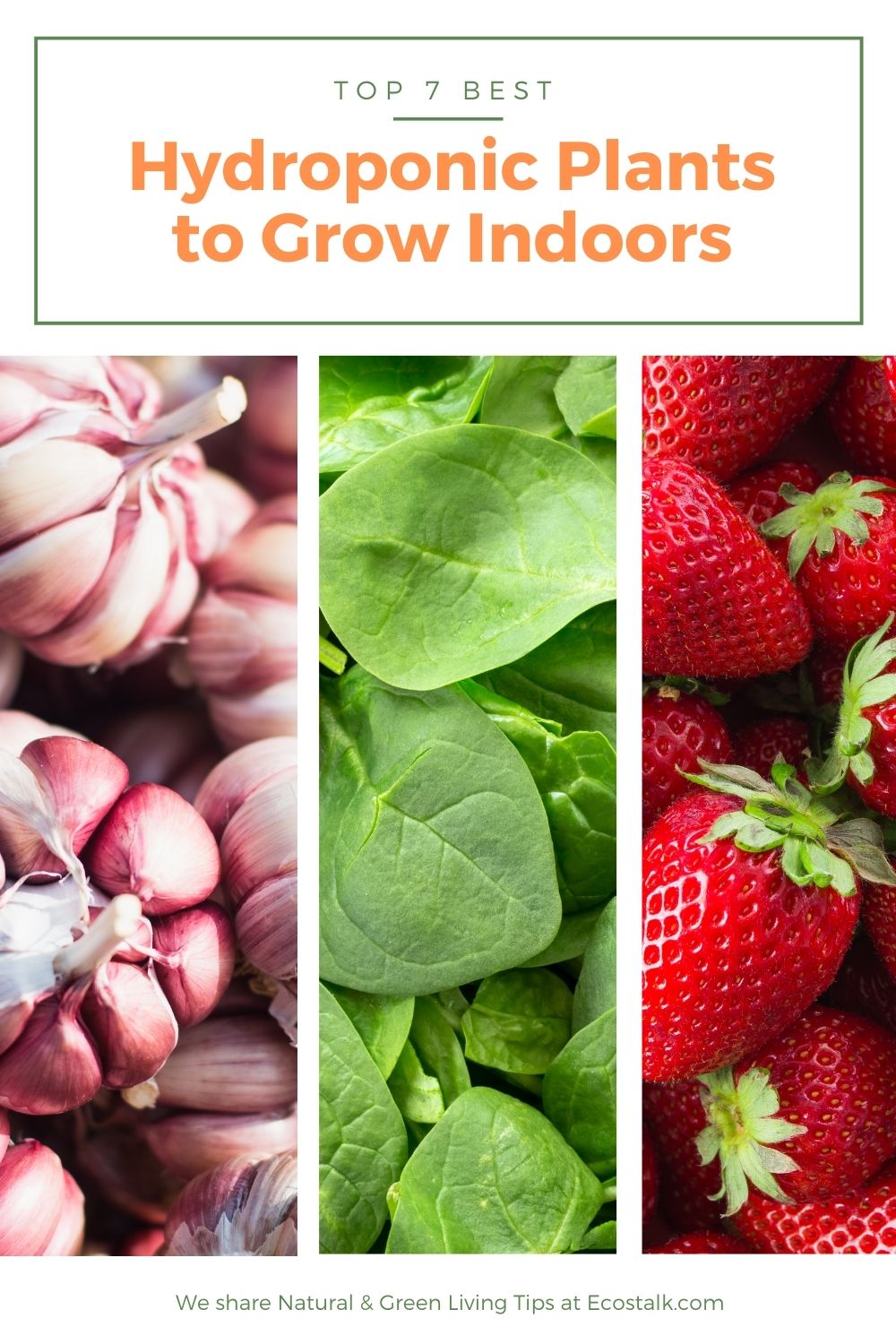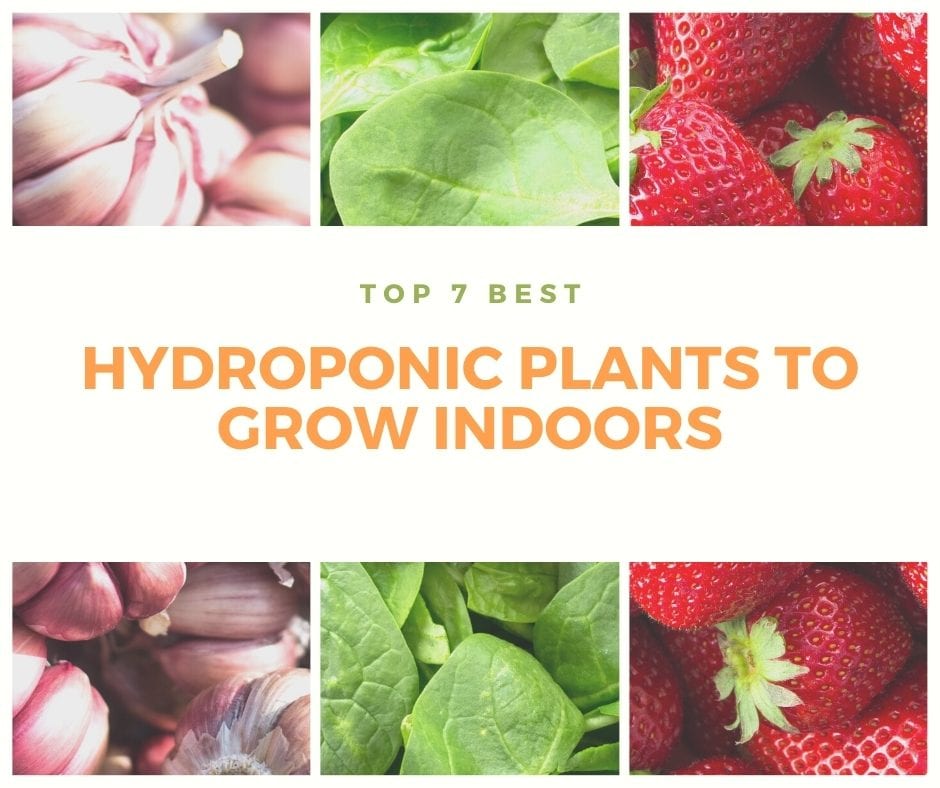Please note that I may earn a small commission from purchases made through product links in this article. As an Amazon Associate I earn from qualifying purchases.
Last updated: February 11, 2023
Starting a hydroponic garden is a great indoor hobby. It’s better for your health, the environment, and your hip pocket. But if you are new to hydroponic growing, it can be intimidating. So to get you started, here is our list of the top 7 best hydroponic plants to grow indoors.
Top 7 Best Hydroponic Plants to Grow Indoors
Garlic
Garlic is a pretty expensive herb, so learning to grow it yourself can be a real money saver.
Hydroponic garlic is possible to grow indoors, but it is more of a challenge than the other plants on this list.

The key thing with growing hydroponic garlic indoors is to make sure that it gets heaps of sunlight, especially at the roots.
The roots shouldn’t stay damp all the time, because they will rot. As a result, not all hydroponic systems, like ebb and flow, for example, maybe suitable.
Using hydroponic mediums like coco coir, perlite, or vermiculite are all good options to try. Garlic also likes nice cool temperatures to grow.
Growing hydroponic garlic indoors can also get a bit smelly.
So it is recommended to grow it in an area that is separate from the rest of your house so you aren’t always exposed to the smell.
You can read more about growing hydroponic garlic in our guide to growing garlic indoors and outdoors.
How to Grow Hydroponic Garlic
- Growing Time: 40 days to grow a bulb. Approx. 6 months to split into cloves.
- Best pH Levels: 6.0 to 7.5
- From Seed or Cutting: From cutting. You can grow garlic using a clove. Put the clove in water first until it starts growing small roots, and then transplant to your hydroponic setup.
- Best Time of Year to Grow: Start in the cooler months to grow your first bulb.
- Sunlight required: Plenty of Sunlight. Minimum 14-16 hours per day is preferred.
- Temperature: 32 to 50 Degrees Fahrenheit (0 to 10 degrees Celsius)
- Varieties to Grow: Elephant Garlic
Mint
Mint is another super easy plant to grow indoors with a hydroponic system. Many herbs including parsley, chives, and basil grow very well in an indoor hydroponic garden.
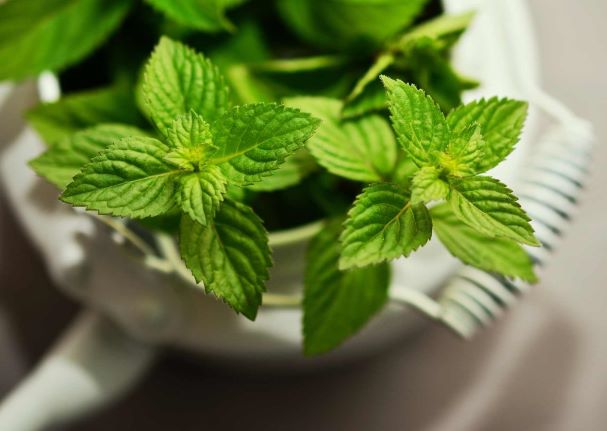
We have an awesome guide on the best indoor hydroponic systems for beginners if you don’t already have a garden like the one below set up at home.
No products found.
There is nothing like the taste of fresh herbs, and growing your own is a great time and cost saver. Fresh mint is amazing for tea, cold drinks (like Mint Juleps!), and Asian cooking, especially for Thai dishes.
How to Grow Hydroponic Mint
- Growing Time: approx. 90 days from seed
- Best pH Levels: 6.0 to 7.0
- From Seed or Cutting: From Seeds or Plants from the store.
- Best Time of Year to Grow: All Year Round
- Sunlight required: 12-16 hours per day is preferred.
- Temperature: 55 to 70 Degrees Fahrenheit (13 to 21 degrees Celsius)
- Varieties to Grow: Peppermint, Spearmint
Tomatoes
Hydroponic tomatoes are a popular plant to grow indoors. This is because they don’t require much ground space, as most popular varieties grow on a vine.
You can set up stakes so that they can grow up towards the ceiling instead of spreading out all over your floor!
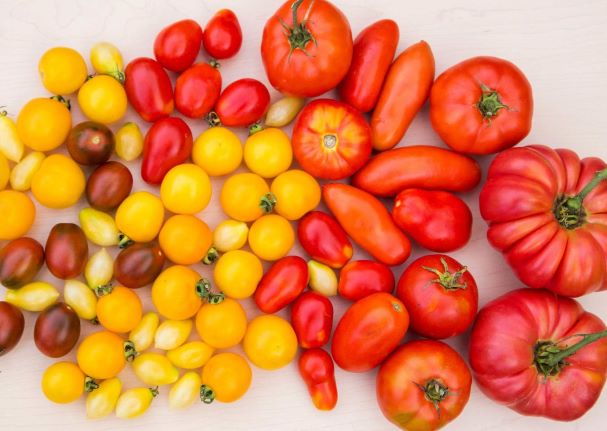
Or if you want to grow cherry tomatoes, you can also grow these in a small indoor hydroponic garden kit as I mentioned earlier for herbs like mint and parsley.
They are such a tasty and healthy addition to your diet, with plenty of antioxidants, vitamin E, and vitamin C.
Controlling the nutrients via a hydroponic solution means you can get a more flavorsome crop all year round.
Tomatoes are usually water-hungry plants, so they thrive in a hydroponic system. When planted in soil more of the water can evaporate and never make it to the plant.
Air circulation is also important for growing hydroponic tomatoes.
Tomatoes like the heat, but you don’t want it to get too humid in case this attracts pests or other plant diseases.
How to Grow Hydroponic Tomatoes
- Growing Time: 30-60 days
- Best pH Levels: 5.5 to 6.5
- From Seed or Cutting: From Seed
- Best Time of Year to Grow: All year Round
- Sunlight required: Plenty of Sunlight. Minimum 6 hours per day. 12-16 hours per day is preferred.
- Temperature: Day Time: 70 to 80 Degrees Fahrenheit (21 to 27 degrees Celsius). Night Time: 60 to 65 degrees Fahrenheit (15 to 18 degrees celsius)
- Best Varieties to Grow: Varieties that grow on a vine instead of a bush. These are easier to manage indoors as they don’t all grow out in different directions. These include Cherry tomatoes, Heirloom, Roma, Hybrid, Kumato, and many others.
Strawberries
Growing your own hydroponic strawberries is the best! Sweet and succulent, growing hydroponic strawberries is a breeze.
They are super healthy for you too, because they are high in antioxidants and flavonoids which are good for your skin and immune system.
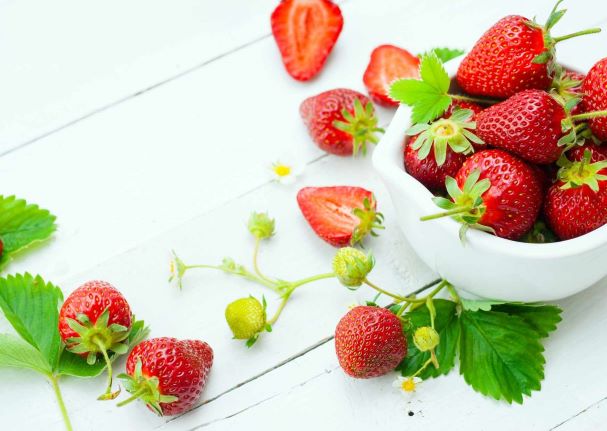
If you are planning on giving strawberries a go, make sure you use a system that has great drainage.
Substrates like coconut coir, peat moss, and perlite are all good options.
There are three different types of strawberry varieties you can grow hydroponically.
These include June-bearing, Ever-bearing, and Day-neutral. June-Bearing has one big crop per year, Ever-bearing three crops a year, and Day-neutral plants will flower and fruit all year.
We have included our recommended Day-neutral strawberry varieties for hydroponic growing below.
How to Grow Hydroponic Strawberries
- Growing time: About 30 days
- Best pH Levels: 5.5 to 6.0
- From Seed or Cutting: From a cutting (or runner)
- Best time of Year to Grow: All Year Round
- Sunlight Required: Minimum 6 hours. Ideal 12-14 hours per day.
- Temperature: Day Time: 75 Degrees Fahrenheit (24 degrees Celsius). Night Time: 60 Degrees Fahrenheit (15 degrees Celsius).
- Best Varieties to Grow: Quinault, Albion, Seascape, Tribute
Spinach
Spinach is a superfood, with so many great health properties. It is super high in magnesium, iron, vitamins K, A, and C, and folates.
Some say that growing hydroponic spinach indoors makes the plant more bitter than when it’s grown in soil.
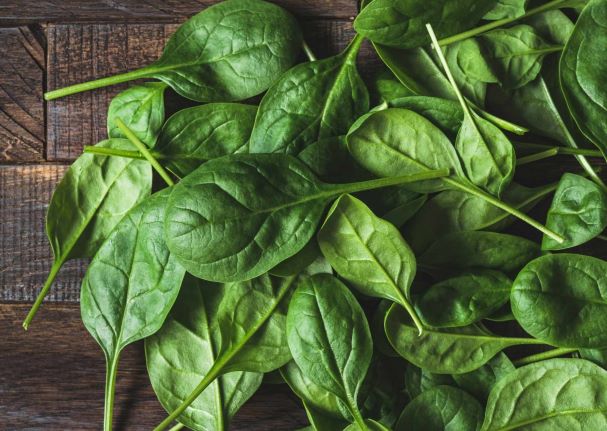
But if you get the basic heat and light requirements right you can get a really tasty yield.
Spinach is a cool-weather crop, so getting the right temperature and adjusting it from day to night is super important. If it gets too hot it will bolt or flower, which will increase the bitter taste.
How to Grow Hydroponic Spinach
- Growing Time: 45 to 55 days
- Best pH Levels: 5.6 to 6.0
- From Seed or Cutting: From Seed. Use fresh seeds for the best yields.
- Sunlight required: Approx. 12 hours per day but no more. Excess sunlight may create bitter plants.
- Temperature: Day Time: 65 to 70 degrees Fahrenheit (18 to 21 degrees Celsius). Night Time: 60 to 65 degrees Fahrenheit (16 to 18 degrees Celsius).
- Varieties to Grow: Savoy, Flat Leaf, Noble Giant, New Zealand
Bell Peppers
Bell peppers are a slightly more advanced hydroponic plant. but you can grow them all year round, and hydroponic peppers can grow bigger than in soil which makes it worth the effort.
Peppers like the heat, so they are good to plant with tomatoes and cucumbers too.
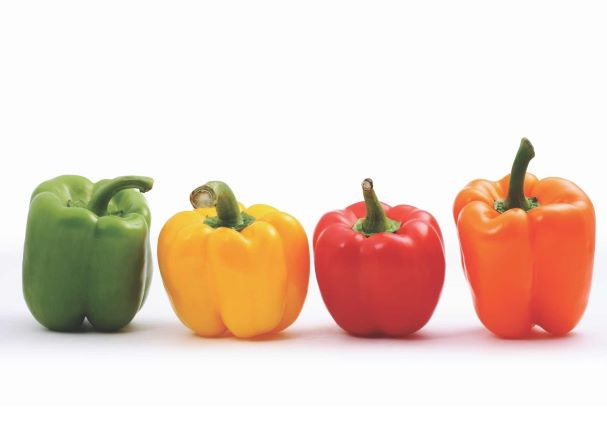
You can try ebb and flow or deep water culture systems to get the best yield from your peppers.
As they are a vine plant, you can grow them vertically on stakes. Use an adjustable light rack so you can raise your light upwards as your plant grows.
No products found.
How to Grow Hydroponic Bell Peppers
- Growing Time: Approx. 50 to 80 days
- Best pH Levels: 5.5 to 7
- From Seed or Cutting: From Seed
- Best Time of Year to Grow: All year round
- Sunlight Required: From 10-12 hours per day
- Temperature: 73 to 80 degrees Fahrenheit ( 23 to 27 degrees celsius)
- Variety options: Ace, California Wonder, Vidi, Yolo Wonder
Pak Choy (Chinese Cabbage):
Pak Choy or Chinese Cabbage is a very easy hydroponic plant for beginners to grow. Like many plants in the mustard family, it grows very well in a hydroponic garden.
It is also a very tolerant plant, it can thrive in hot or cold climates.
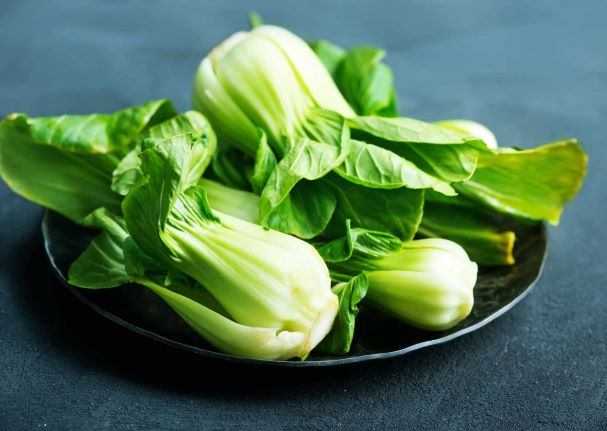
If you like Chinese or southeast Asian cooking, Pak Choy is a staple vegetable for your kitchen.
It also grows super fast (only 30 days!) so you can easily stagger your crop to have a never-ending supply all year round.
How to Grow Hydroponic Pak Choy
- Growing Time: Approx. 30 days
- Best pH Levels: 6.5 to 7.5
- From Seed or Cutting: From Cutting. You can re-grow Buk Choy by cutting off the base and transplanting it into the water and then your hydroponic setup.
- Best Time of Year to Grow: All year round
- Sunlight Required: From 6-7 hours per day
- Temperature: 55 to 75 degrees Fahrenheit (13 to 24 degrees celsius)
- Variety options: Pak Choy, Shanghai Pak Choy
Final Thoughts
In reality, the list of hydroponic plants that you can grow indoors is a lot longer than this one. But this is a list of the best hydroponic plants to start with, especially for a beginner.
For a quick win, I recommend starting with a small desktop indoor hydroponic garden with herbs, lettuce, and spinach.
This is because these are super easy to grow, and you will build up your growing confidence. From here you will be able to build a more sophisticated indoor hydroponic set up in no time.
Get ready to be the envy of all your friends and neighbors (and share the fruits of your efforts)!
